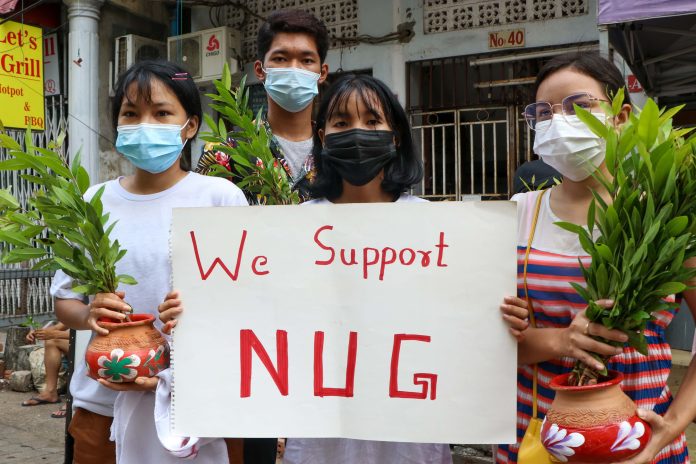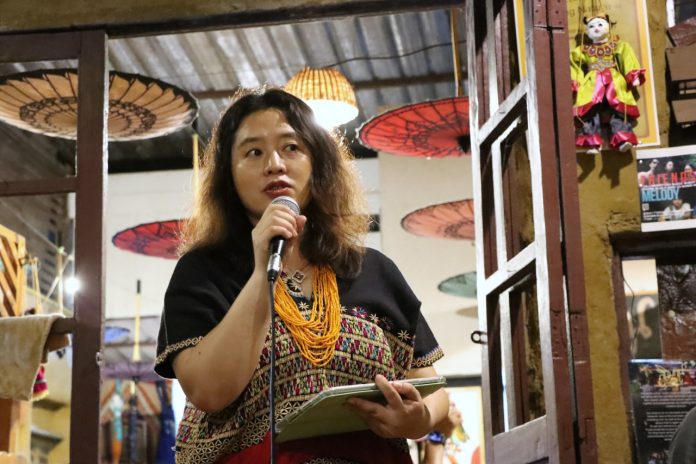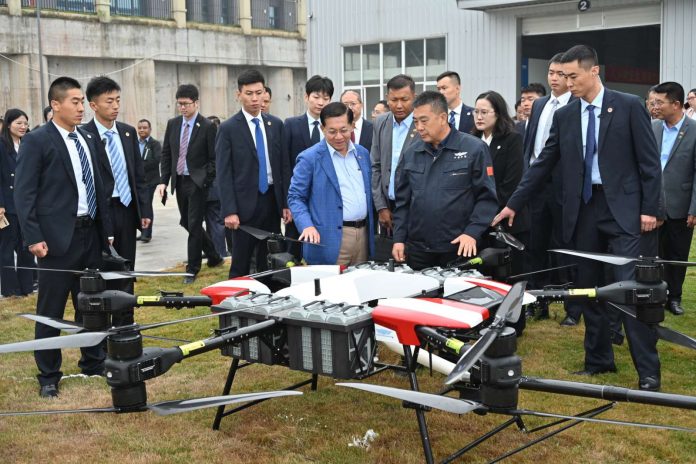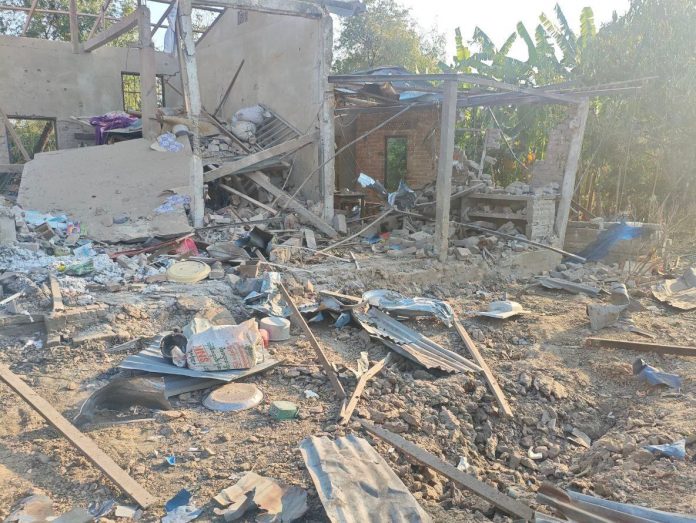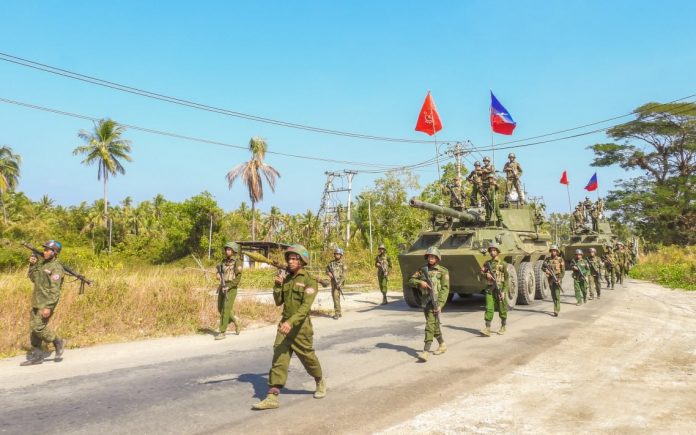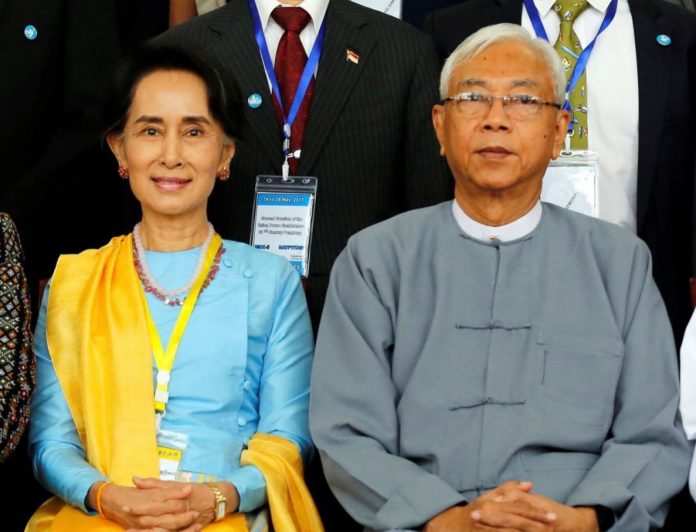Guest contributor
Harry Myo Lin
The struggle for democracy in Myanmar represents one of the most urgent human rights crises of our time. Since the military coup in February 2021, the regime in Naypyidaw has waged a brutal campaign against political dissidents, ethnic minorities, and faith-based communities.
Entire villages have been burned to the ground, religious institutions have been desecrated, and thousands of civilians have been arrested, tortured, or killed. The military regime’s systematic violence has forced over a million people to flee their homes, creating a growing humanitarian disaster.
In the face of this oppression, the people of Myanmar continue to resist. The National Unity Government (NUG), made up of ousted elected officials and pro-democracy leaders, has emerged as the legitimate representative of the Myanmar people.
The resistance also includes ethnic armed organizations (EAOs) and grassroots protest movements and the Civil Disobedience Movement (CDM) as well as People’s Defense Forces (PDFs), which have taken up arms against the military regime. Despite immense challenges, these groups remain determined to restore democracy.
The U.S. has a moral and strategic imperative to support Myanmar’s pro-democracy movement. The failure to act decisively would not only embolden the regime but also allow authoritarianism to take deeper root in Southeast Asia.
Under President Trump’s leadership, the U.S. has an opportunity to stand on the right side of history by increasing diplomatic, economic, and humanitarian support for the resistance. Such action would not only align with American values but also serve key geopolitical interests in the region.
The moral responsibility to support Myanmar
For decades, the people of Myanmar have looked to the U.S. as a beacon of democracy and human rights. America’s founding principles—liberty, representative government, and the protection of individual rights—resonate deeply with those fighting for freedom in Myanmar.
When the military overthrew the elected government in 2021, millions of people took to the streets, waving banners and chanting pro-democracy slogans that drew inspiration from American ideals.
Faith-based institutions have played a crucial role in sustaining this resistance. Religious leaders—including Christian pastors, Buddhist monks, Hindu pandits and Muslim imams—have risked their lives to provide food, shelter, and medical aid to those affected by the military’s crackdown.
Many of these organisations have a long history of supporting Myanmar’s vulnerable populations, dating back to previous periods of military rule. Their deep community ties make them ideal partners for U.S. humanitarian assistance, ensuring that aid reaches those who need it most without being co-opted by the regime.
Furthermore, Myanmar’s diverse religious communities have suffered immense persecution under the regime. The military has not only targeted political dissidents but has also escalated attacks on religious minorities.
Churches have been bombed, Temples have been torched, mosques have been raided, and Buddhist monks who speak out against the regime have been arrested, disappeared and murdered. The U.S., which has long championed religious freedom as a fundamental human right, cannot ignore these atrocities. Supporting Myanmar’s resistance is not just a matter of strategic policy—it is a moral obligation.
The geopolitical stakes: countering China’s influence
Beyond moral considerations, supporting Myanmar’s democratic movement aligns with U.S. strategic interests. Myanmar is a key battleground in the broader geopolitical competition between the U.S. and China.
Since the 2021 coup, the regime has become increasingly reliant on Beijing for economic and military support. China has provided diplomatic cover for the regime at the United Nations (U.N.), supplied weapons and surveillance technology, and continued major infrastructure investments under its Belt and Road Initiative (BRI).
These projects, including the China-Myanmar Economic Corridor (CMEC), are designed to give Beijing greater access to the Indian Ocean, strengthening its strategic foothold in Southeast Asia.
A democratic Myanmar, on the other hand, would likely align itself with countries that share democratic values and uphold human rights. The NUG has already expressed a desire to build stronger ties with Western democracies, particularly the U.S.
If Myanmar’s pro-democracy forces succeed, the country could become a valuable regional partner, enhancing U.S. influence in Southeast Asia and counterbalancing China’s growing dominance.
Furthermore, Myanmar’s instability has broader security implications. The country has become a hotspot for illicit activities, including arms smuggling, drug trafficking, and human rights abuses linked to forced labor and human trafficking.
The military’s corruption and criminal ties have only worsened these problems. A stable, democratic Myanmar could work with the U.S. and regional allies to combat these transnational threats, contributing to greater security in the Indo-Pacific.
Learning from past U.S. policy: The need for targeted support
The history of U.S. foreign aid in Myanmar offers valuable lessons for crafting an effective response. Previous administrations have oscillated between engagement and withdrawal, sometimes providing substantial assistance and at other times reducing aid due to shifting geopolitical priorities.
Recent cuts in U.S. funding for humanitarian programs has severely impacted Myanmar’s vulnerable populations, leading to the closure of refugee camps and hospitals. Conversely, targeted assistance—such as aid to Rohingya refugees—demonstrated how well-allocated resources can alleviate suffering and promote stability, although in a limited way.
A renewed U.S. strategy should include three key components:
- Increased humanitarian aid through faith-based and local organizations – directing funds to trusted religious and civil society groups ensures that humanitarian assistance reaches those in need without being intercepted by the regime. This includes support for displaced populations, medical aid, and educational programs for children affected by the conflict.
- Stronger sanctions against the regime and its financial networks – The U.S. should intensify economic pressure by freezing the assets of top military leaders and cutting off revenue sources that sustain the regime, such as state-owned enterprises and foreign investments that fund military operations. Restricting access to the global financial system and a jet fuel ban would make it harder for the regime to maintain power.
- Non-lethal assistance to the NUG and resistance forces – Providing technical support, communications equipment, and intelligence-sharing mechanisms would strengthen the NUG’s ability to coordinate resistance efforts. The U.S. could also explore ways to support the parallel governance structures that the NUG and other resistance organisations are establishing in liberated areas.
Building regional and international pressure
To maximise its impact, the U.S. must work closely with regional allies to isolate the regime more in terms of both diplomacy and economy. Thailand and India, as Myanmar’s neighbors, play crucial roles in shaping the country’s future.
While Thailand and India have maintained ties with the regime, increased diplomatic pressure from the U.S. could push Bangkok toward a more neutral or pro-democracy stance and New Delhi, which shares a border with Myanmar and has its strategic interests in the region, could also be persuaded to take a firmer position against the regime.
The Association of Southeast Asian Nations (ASEAN) has struggled to formulate a unified response to the crisis, with some member states advocating for stronger action while others prioritize stability over democratic restoration.
The U.S. should leverage its influence to encourage ASEAN to enforce stronger diplomatic measures, such as suspending Myanmar from regional meetings and demanding concrete steps toward political transition.
Additionally, revising U.S. immigration policies to expedite asylum applications for persecuted religious minorities from Myanmar would reinforce America’s role as a sanctuary for the oppressed.
Offering temporary protected status to those fleeing violence would provide immediate relief while sending a strong message that the U.S. stands with the people of Myanmar.
Myanmar’s Spring Revolution is a defining test of America’s commitment to democracy and human rights. The Trump administration has a unique opportunity to demonstrate global leadership by standing with Myanmar’s resistance movement.
By increasing humanitarian aid, enforcing stricter targeted sanctions, and working with regional allies to isolate the regime, the U.S. can help shape the future of Southeast Asia while reaffirming its moral and geopolitical leadership.
Failing to act would not only betray America’s values but also cede influence to authoritarian powers like China and Russia. The time for decisive U.S. engagement is now. Supporting Myanmar’s fight for freedom is not just the right thing to do—it is a strategic necessity for regional stability and global democracy.
Harry Myo Lin is a Myanmar expert based in Austria with extensive experience across Myanmar and Asia, specialising in peacebuilding, International Relations, interreligious dialogue, and promoting freedom of religion and belief.
DVB publishes a diversity of opinions that does not reflect DVB editorial policy. We’d like to hear what you think about this or any of our stories: [email protected]


